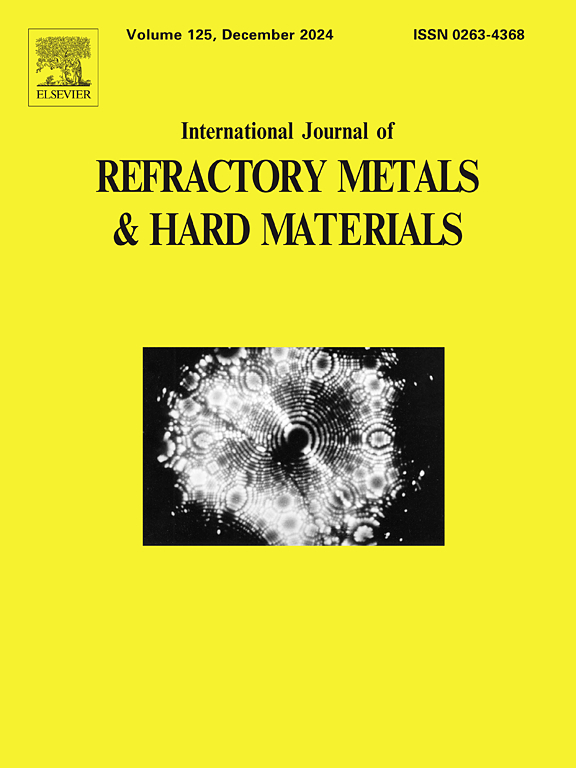Microstructural investigations of textured CVD (Al,Ti)N/κ-Al2O3 wear resistant coatings
IF 4.2
2区 材料科学
Q2 MATERIALS SCIENCE, MULTIDISCIPLINARY
International Journal of Refractory Metals & Hard Materials
Pub Date : 2025-01-25
DOI:10.1016/j.ijrmhm.2025.107075
引用次数: 0
Abstract
In this work, the deposition of κ-Al2O3 on textured (Al,Ti)N coatings using chemical vapour deposition (CVD) is explored. Two TiN/(Al,Ti)N/κ-Al2O3 coatings with different texture for the (Al,Ti)N layer, 〈111〉 and 〈100〉, have been investigated. The coatings were characterized using X-ray diffraction, scanning electron microscopy, transmission and scanning transmission electron microscopy and energy dispersive X-ray spectroscopy.
The κ-Al2O3 layer deposited on the 〈111〉 textured (Al,Ti)N layer has a 〈001〉 texture, while the κ-Al2O3 deposited on the 〈100〉 textured (Al,Ti)N layer shows no clear texture. The difference in κ-Al2O3 texture is driven by the (Al,Ti)N facets available for alumina nucleation. κ-Al2O3 forms on {111} (Al,Ti)N facets, while γ-Al2O3 forms on {100} (Al,Ti)N facets. γ-Al2O3 growth is not stable and is subsequently overgrown by κ-Al2O3. The surface of the 〈100〉 textured (Al,Ti)N layer is dominated by {100} facets, while the surface of the 〈111〉 textured (Al,Ti)N layer is built up of a mixture of {100} and {111} facets. This explains the observed microstructure for the κ-Al2O3 layers in the two coatings. Thus, to optimize the deposition of κ-Al2O3 on (Al,Ti)N, the latter should exhibit {111} facets.

求助全文
约1分钟内获得全文
求助全文
来源期刊
CiteScore
7.00
自引率
13.90%
发文量
236
审稿时长
35 days
期刊介绍:
The International Journal of Refractory Metals and Hard Materials (IJRMHM) publishes original research articles concerned with all aspects of refractory metals and hard materials. Refractory metals are defined as metals with melting points higher than 1800 °C. These are tungsten, molybdenum, chromium, tantalum, niobium, hafnium, and rhenium, as well as many compounds and alloys based thereupon. Hard materials that are included in the scope of this journal are defined as materials with hardness values higher than 1000 kg/mm2, primarily intended for applications as manufacturing tools or wear resistant components in mechanical systems. Thus they encompass carbides, nitrides and borides of metals, and related compounds. A special focus of this journal is put on the family of hardmetals, which is also known as cemented tungsten carbide, and cermets which are based on titanium carbide and carbonitrides with or without a metal binder. Ceramics and superhard materials including diamond and cubic boron nitride may also be accepted provided the subject material is presented as hard materials as defined above.

 求助内容:
求助内容: 应助结果提醒方式:
应助结果提醒方式:


